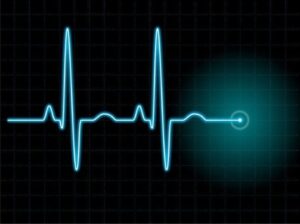A new study published in JAMA Network Open shows promising results for those who want to use wearable devices to fight the spread of various diseases. In the study, the researchers exposed 31 (willing) participants to an H1N1 influenza virus and 18 (willing) participants to a human rhinovirus (also known as the common cold), and fitted each subject with an E4 wristband from Empatica to try to predict both the likelihood and the severity of an infection.

The participants started wearing the wristbands to generate baseline readings before they were exposed to their respective viruses. The researchers then tracked the changes in each participant once they were inoculated.
Based on those changes, the researchers were able to predict whether or not someone would be infected with the flu with 78 percent accuracy only 12 hours after exposure, and that number rose to 92 percent after 24 hours. However, the median participant did not start showing symptoms (such as fever and runny nose) until 48 hours after exposure.
The results were similar for the common cold. The predictive algorithm (developed using the participants’ baseline health results) was 78 percent accurate after 12 hours, and 88 percent accurate after 36, though the median cold participant also started displaying symptoms at that same 36 hour mark. Meanwhile, the researchers could predict whether an infection would be mild or severe with 90 percent accuracy for both the cold and the flu.
The upshot is that the wearable devices knew whether or not a participant was sick a full day before that person started showing physical symptoms like fever, a runny nose, or aches and pains. That means that patients and doctors could take proactive measures if they think they might be sick. For example, the patient could take steps to isolate themselves to prevent further spread, or seek out any preventative treatments that may be available.
While large-scale disease prediction studies have been carried out with devices like the FitBit and the Oura Ring, the authors of the JAMA paper noted that those studies have limited utility because they could not control for when each participant was exposed to the disease. That makes it difficult to reach any conclusions that would pass clinical muster, since the researchers could not confidently distinguish pre- and post-exposure readings.
The JAMA study is noteworthy because the researchers knew the exact time and date of exposure, and could therefore attribute changes to the virus. The E4 wristbands track metrics like heart rate, skin temperature, and movement, as well as electrical skin activity. The fact that there were observable differences suggests that it is indeed possible to use wearable devices as an early warning system when tracking various diseases (including COVID-19).
Having said that, the researchers acknowledged that their algorithm is not yet ready for commercial use. For one thing, the study had a small sample size, with a participant pool comprised primarily of white men. Any product would need to be tested on a more representative population, and would need to account for naturally occurring bodily changes. For instance, someone could have an elevated temperature while they are menstruating, and doctors would not want that to trigger a false positive while watching for the flu.
By the same token, an algorithm developed with one device may not work as well when transferred to another wearable. Researchers would need to account for every wearable and every body type in order to provide predictive coverage for entire populations, and people’s natural idiosyncrasies would make it virtually impossible to make a firm diagnosis based only on wearable recordings.
However, that could still be an important tool in the fight against a disease like COVID-19. The results could prompt someone to get an official diagnostic test, and could help doctors allocate resources more efficiently and prioritize high-risk patients in triage situations.
Sources: Medpage Today, STAT
–
October 4, 2021 – by Eric Weiss




Follow Us